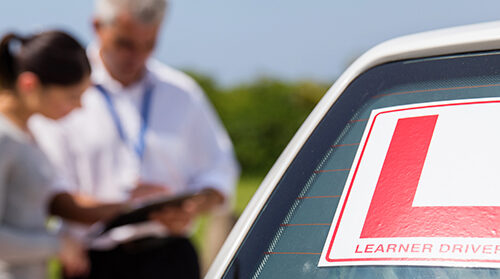Testing the waters of the new driving test

With just over one month to go until the new driving test comes into force, research demonstrates less than half of current drivers are convinced the changes are a good idea (46%).
The driving test will alter as of 4 December to better reflect ‘real life’ driving. The changes include a longer section of independent driving, following a sat nav and the removal of the U-Turn and reversing around a corner manoeuvres, which will be replaced by having to complete one of three possible reversing exercises, including parallel or bay parking.
Despite people’s misgivings, the research of almost 2,500 drivers, which was conducted by pre-17 driving experts Young Driver, revealed the new additions are with good reason. One in three current drivers (30%) admit they still struggle to reverse park into a bay, with a similar number (29%) always choosing to drive in front first to avoid having to even try.
According to the research, we are also losing the ability to get ourselves from A to B without the help of an electronic device, proving including a sat nav in the test may be a good idea. One in 10 drivers (11%) admit they follow their sat nav above what road signs might be telling them and it’s a strategy that has got one in four of us lost on occasion.
Although being able to use a sat nav is now considered essential, Young Driver will be reminding pupils that keeping safe on the roads includes being aware of where you are and how to adapt if situations change. One in five current drivers (20%) admit to setting off on a journey with no idea of the route they need to take, leaving themselves entirely in the hands of technology. This figure rose to one in three under 24s (33%), but dropped to one in seven over 55s (14%).
Another new element of the test is having to answer ‘show me’ questions whilst driving, a good test of being able to assess whether it is safe to do something and then managing another activity whilst driving. These might include opening windows, putting on windscreen wipers or putting on lights. Combined with the increased level of independent driving, it is hoped this will give a better indication of how well the learner can cope with more realistic driving situations. One in four current drivers said they thought the hardest thing about driving is dealing with distractions, including passengers talking and external places of interest, rather than the mechanics of working the car.
Laura White, head of marketing at Young Driver, said, ‘We were intrigued to see what drivers thought of the upcoming changes and although some seem hesitant, given what they’re telling us about being a driver – how important sat nav has become, how hard it is to deal with distractions and how bad many of us are at reversing – it seems that the changes are actually very sensible.
‘Research shows that if people can become more practiced at the basics of driving before they turn 17, it makes them a safer drive and almost half as likely to have an accident straight after passing their test than their peers. Making the fundamental driving skills become second nature, so they become more ‘automatic’, leaving the driver better able to deal with distractions and be aware of other road users is key, as is spending as much time as possible with a qualified instructor. It sounds like many of us wish we’d had more chance to learn some of the basic manoeuvres better, reverse parking is always the issue!’








